
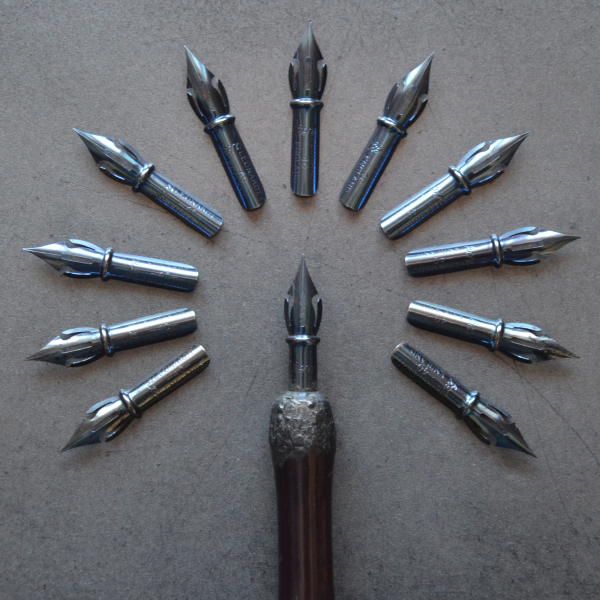
Leonardt 40 Steno. This is a nib intended for calligraphy, but works very well with chaotic line creation that I do. It's very flexible, which gives you a wide range of line thickness and holds a lot of ink, which lets you draw for longer before refilling. This is a perfect nib for me, might not be the case for you though. The point is - try lots of different nibs and once you find the right one for you - stick to it. I'd even say go further - buy a hundred of them so they last you a long time, even if they stop producing them. Stock up on nibs, they are the most important piece of entire drawing gear setup.
The pen itself is not important at all though. It can be plastic, wooden or even just a stick you found in a forest. Just make sure it's comfortable to hold. Other than that - it's replaceable, like everything else on this list.
The pen itself is not important at all though. It can be plastic, wooden or even just a stick you found in a forest. Just make sure it's comfortable to hold. Other than that - it's replaceable, like everything else on this list.

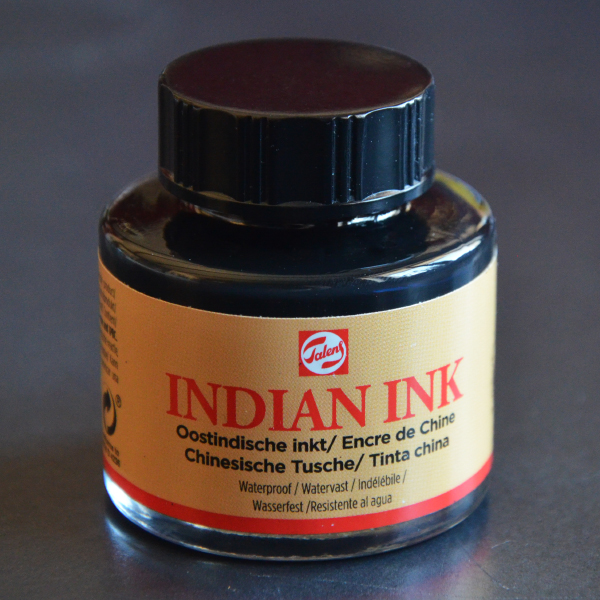
Talens Indian Ink. It's waterproof, which is a big thing you have to watch out for if you intend to use it alongside watercolors. There are two schools of comic book drawing that I use. First is - draw all ink parts first, then color them using watercolors. This technique gives you more stable and groomed drawing, as you tend to draw between the lines once you're coloring the page. Waterproof ink is a must in this case. The other school is to create watercolor painting based on pencil sketch first, and then to finish it off with ink linework. This way you get a more chaotic and wild drawing, since the color doesn't obey the lines. I'm still not sure which one is better for me, I've been jumping between those two for the last 20 years or so.

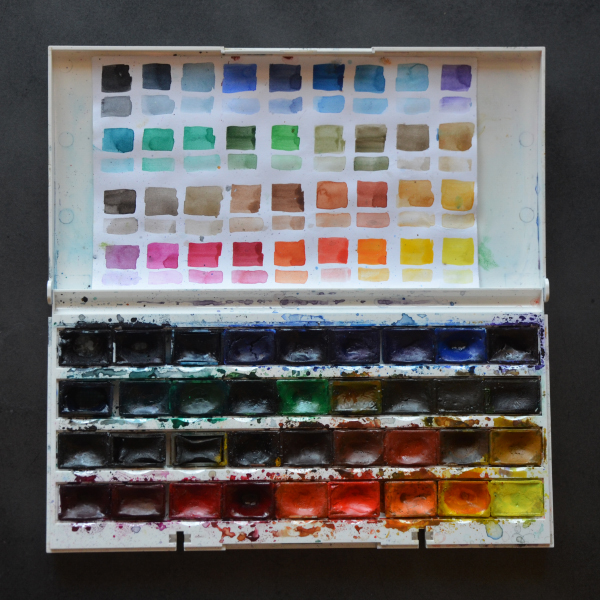
St. Petersburg White Nights Watercolours. This, again is a matter of preferability. You can find other brands more suitable for your needs. I've been using them since forever, I'm pretty sure internet wasn't even a thing when I started painting with these, so there you go. Not this particular set, but the brand. They last for a very long time and give fantastic vibrant colors. I was also using Talens Ecoline in the past, which are liquid watercolors, however I went back to White Nights for more organic watercolor control, if that makes any sense.

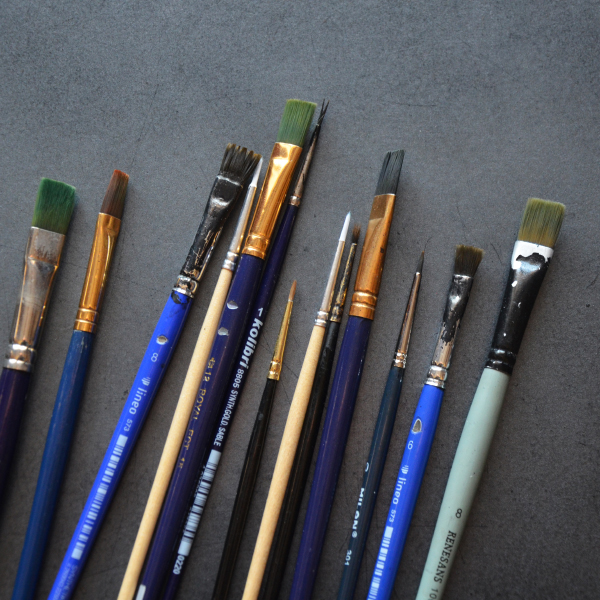
This doesn't matter. This might come as a surprise to you, but I don't care about brushes that much. I'm buying cheapest brushes and when they inevitably become worn down I just throw them away and replace them with new ones, also cheap as dirt. Notice that they tend to go quicker when you use them with ink, it seems ink breaks them down more viciously. On the above picture you can see my current set containing brushes in different states of entropy. I also tend to buy new brushes when I start new drawing projects, like a new comic book. It seems to give a boost to productivity. Just like a freshly washed car seems to drive better.

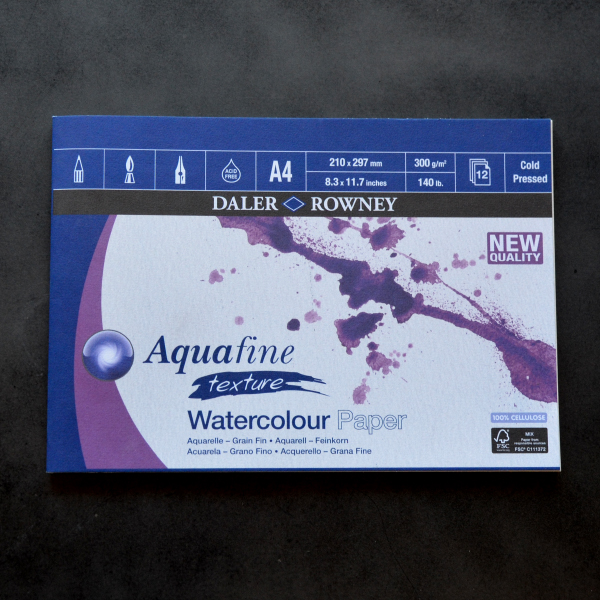
Daler Rowney Aquafine Texture. 300 g/m2, cold pressed, fine grain. Again, this is a matter of preference, not only of paper quality, but the texture. Buy different textured papers to find what works for you. I'd suggest the thickest option though, I use 300 g/m2, which seems to be the right grammature between heavy watering and not bending almost at all. Water damage is basically non existent here.

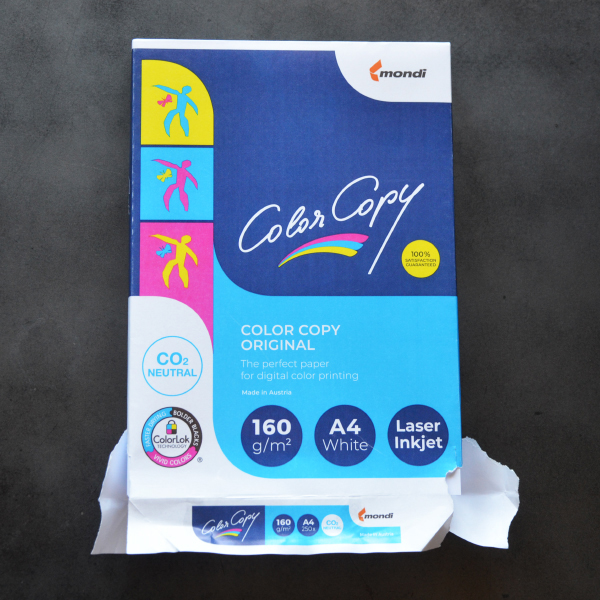
Mondi Color Copy Original. 160 g/m2. This is a paper I use for drawing with ink only, without water or watercolors. Strictly for black and white drawings to be scanned and colored digitally. The brand doesn't matter really, the most important measurement here is, again, grammature, the thickness of paper. It's 160 g/m2, and with smooth touch. It's not coated, not glossy, not satin. It's smooth (that's how they describe it on the back side). Again, this is a cheap option, but does it's job better than expensive papers. Characteristics of this paper cause ink lines to not bleed. This is very important when drawing highly detailed ink drawings.












